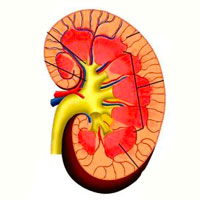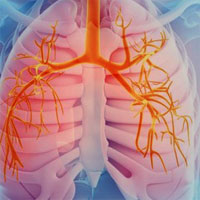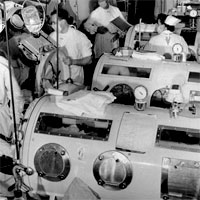Tag: oxygenation

Choosing the Appropriate Configuration and Cannulation Strategies for ECMO
Extracorporeal membrane oxygenation (ECMO) is becoming a common procedure to support patients with severe cardio-circulatory or respiratory failure as well as in case of combined compromise of the two systems. Deciding which... read more

The Future of Mechanical Ventilation
The adverse effects of mechanical ventilation in acute respiratory distress syndrome (ARDS) arise from two main causes: unphysiological increases of transpulmonary pressure and unphysiological increases/decreases of pleural... read more

Urinary Oxygenation as a Surrogate Measure of Medullary Oxygenation During Angiotensin II Therapy in Septic AKI
In septic acute kidney injury (AKI), renal medullary and urinary hypoxia developed several hours before increases in currently used biomarkers. Angiotensin II transiently improved renal function without worsening medullary... read more

Implementation of a Goal-Directed Mechanical Ventilation Order Set Improves Compliance
Implementation of a Goal-Directed Mechanical Ventilation Order Set Driven by Respiratory Therapists Improves Compliance With Best Practices for Mechanical Ventilation. Data regarding best practices for ventilator management... read more

Optimal Approach to Mechanical Ventilation After Cardiac Arrest
Return of spontaneous circulation after cardiac arrest results in a systemic inflammatory state called the post-cardiac arrest syndrome (PCAS), characterised by oxidative stress, coagulopathy, neuronal injury, and organ dysfunction.... read more

Acute Hypoxemic Respiratory Failure in Immunocompromised Patients
In immunocompromised patients with acute hypoxemic respiratory failure (ARF), initial management aims primarily to avoid invasive mechanical ventilation (IMV). HFNC has an effect on intubation but not on mortality rates.... read more

Inside the lives of America’s last iron lung patients
Long after the polio vaccine stemmed the disease that once infected thousands of people, a handful of U.S. polio survivors still rely on decades-old iron lung machines to stay alive-and must overcome increasing obstacles... read more

Gas Exchange in ARDS
Acute respiratory distress syndrome (ARDS) is characterized by severe impairment of gas exchange. Hypoxemia is mainly due to intrapulmonary shunt, whereas increased alveolar dead space explains the alteration of CO2 clearance.... read more

National Variation in the Use of Tracheostomy in Children Undergoing Congenital Heart Surgery
Variation in the usage of tracheostomy in infants and children undergoing congenital heart surgery exists across the country. High-tracheostomy centers had lower hospital charges. Late tracheostomy placement, higher congenital... read more

Successful Long-Term ECMO for Invasive Pulmonary Aspergillosis
Extracorporeal membrane oxygenation is an established life-saving procedure for severe acute respiratory failure due to various causes. Long-term extracorporeal membrane oxygenation might be considered if the primary causes... read more

Validation of the Vasoactive-Inotropic Score in Pediatric Sepsis
Secondary retrospective analysis of a single-center sepsis registry. Vasoactive-Inotropic Score in pediatric sepsis patients is independently associated with important clinically relevant outcomes including ICU length of... read more

Muscle Oxygenation as Indicator of Shock Severity
The aim of this pilot study was to evaluate the potential of a new noninvasive optical measurement of muscle oxygenation (MOx) to identify shock severity in patients with suspected sepsis. We demonstrate that noninvasive... read more

Extracorporeal membrane oxygenation for poisoning in adult patients: outcomes and predictors of mortality
Data on outcomes from severe poisoning in adults receiving extracorporeal membrane oxygenation (ECMO) is currently confined to single-center experiences or specific etiologies. While ECMO cannot facilitate toxin removal,... read more
The Basics of Veno-Arterial and Veno-Venous ECMO and the Indications of ECMO Therapy
Sean P. Kane, PharmD, BCPS, speaks with Elliott Cohen, MD about extracorporeal membrane oxygenation (ECMO). In the episode, the basics of Veno-Arterial (VA) and Veno-Venous (VV) ECMO are outlined and the indications of ECMO... read more








